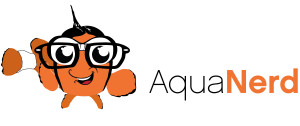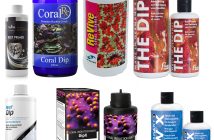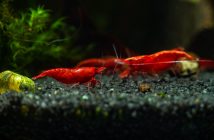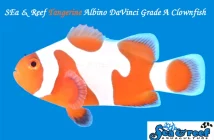Captive breeding is by no means anything new in this hobby, but for some reason it is not as popular as we would like to see it be. By purchasing captive bred fish, you allow the hobby to sustain itself. Just like aquacultured coral, captive bred fish reduced the amount of stress our hobby places on wild fish. Not only that, but captive bred fish also are more adapted to aquarium life and usually come with fewer diseases and parasites that some wild caught fish are infected with. Captive breeding also open up the world of “morphs”, which we mainly see in various clownfish species. Breeders pick certain strains of fish either for their color or patterns and continue to breed fish with such traits giving them only the best looking, best colored specimens.
While taking care of our reefs becomes a daunting task (water changing, cleaning out skimmer, changing out filter socks, replacing media, servicing our return pumps, dosing, cleaning the glass, etc), the day of a breeder can be far more complicated. Sure they do the same tasks we do as far as regular maintenance, but there are a few other things that need to be taken care off. Checking on spawning fish, feeding larva/fry, separating parents from eggs/fry, culturing live foods to prevent them from dying off, and the list goes on.
We recently wrote an article where we viewed Scott Fellmans’ thoughts and frustration as to why people do not support captive breeding (you can view the article here). To get a good point of view on the situation and to just bring some general information about breeding to our fans, we decided to talk to Chad Vossen from Vossen Aquatics. Chad has been breeding fish and other forms of sea life for many years and has tons of experience in the field. So, it was a no brainer to reach out to him.
Chad: “The list of successfully bred is very long, but I have raised Peppermint shrimp, banggai, neon gobies, several species of clownfish, and berghia nudibranch.”
Chad: “I wake up at 11 am and grab some frozen food. I get myself ready for the day, then feed my fish and answer messages, text, and emails. I check all the tanks to make sure things are running smoothly while feeding, and do water changes and general maintenance when necessary. I usually spend most of my day working on larval trap orders or other acrylic projects. I spend a lot of my time on Facebook or reef forums. Typically looking for good deals or working on sales. If the weather is good I will ship any pending orders. If I have something hatching, I will prepare the larval tanks and move the eggs over. I like to stay up late and work on small projects while watching TV. Some days I spend driving to the wholesaler and making copepod deliveries, or I’ll take the day off and see the family or some friends.”
Chad: “My favorite breeding project is currently the orange spot filefish. I have eggs hatching almost nightly but with plans to move in a month, I won’t have time to raise the filefish till after my move. I am also excited for the opportunity to attempt raising the hypomelanistic flame angelfish, which has started spawning with the normal female flame angel.”
Chad: “The available space. I have been working out of my own room that I rent for a few years now. I really hope to afford a commercial space or store in the near future.”
Chad: “I’m working with about 400 gallons.”
Chad: “Each tank in my broodstock system has live sand and a few rocks, but there is not much more than the return pump and a few bio balls. My grow out and quarantine system have good skimmers.”
Chad: “While I think it’s important we continue getting livestock from the wild to support the local economies, it’s important that we expand our knowledge and experience in captive breeding. Breeders can reduce the often intense collecting pressure of certain species, as well as preserve endangered species in captivity. I believe in conservation through commercialization.”
Chad: “The price. The intention is there, but nobody wants to spend more if they can get it somewhere else for less, regardless of how much effort it takes.”






